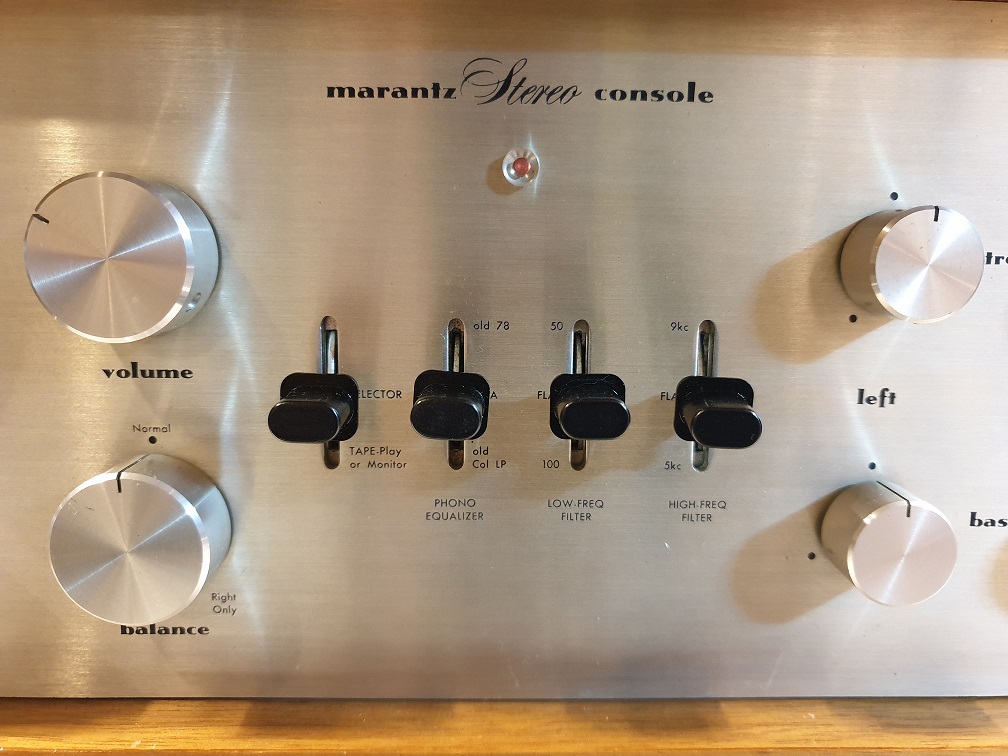728x90
반응형
정말 보기드믄 필립스사의 초기형 명작인 CD104 CDP 입니다. CDP가 최초로 출시되던 시절 탑로딩 방식의
CDP가 중단되고 새로운 모델로서 발매된 CDP 이여서 사이즈는 컴펙트하지만 묵직한 무게와 차분하고 윤기
있고 두툼한 음질이 일품인 제품으로 잘알려져 있습니다. 또한 쉽게 사망하지 않는 수정픽업인 CDM-1 이
들어가는 픽업으로 채용되어 있어 오래됐지만 걱정을 조금덜어서 사용가능하며 DA컨버터는 초기형 명기
컨버터인 TDA1540이 채용되어 있습니다. 마란츠 초기모델은 CD-34와 이름만 다르고 동등모델 이며 사이즈가
적어 사이러스나 네임용으로 많이들 사용하십니다. 한번들어가면 쉽게 나오지 않는 모델이기도 하며 발매도
많은 물량이 나오지 않았던 제품입니다. 작동 상태는 CD 인식 완벽하며 벨트새로 교체하여 트레이기어 생생
합니다. 전용 라인선 달려있으며 전원220V 이며
Philips CD104

Executive brief:
in this article I will look under the skirt of the small and funny CD player Philips CD104.
I will evaluate :
-
- the Laser assembly and mechanism- Philips CDM1
-
- the power supply,
-
- the DAC - Philips TDA1540, and the output stage.
-
- PCB tuning - capacitor games
-
- decoupling of the DAC TDA1540
-
- checking possibility to remove oversampling function - the NOS mod
-
- and adding a Lampizator output stage to remove the old OP-AMPS
-
- evaluate the possibility to use CD104 as a transport

This must be one of the most popular CD players of all times. Kind of Volkswagen Golf so to speak. Its looks are deceiving. It looks like todays midi players from supermarket. Nothing could be more wrong ! This is not a toy, this is a damn serious player ladies and gentlemen. Compared side by side it is identical in every detai to a Revox 225. Same mechanism, same chips, same schematics.
If you have one collecting dust somewhere - DONT EVER SELL IT. If you can buy one - DO IT.
In this whole player absolutely NOTHING IS MADE OF PLASTIC. Not even tray, buttons, or chassis.
the Laser assembly and mechanism- Philips CDM1
The strongest point of Philips CD104 is its mechanism. This is probably the best Philips mechanism ever made, all cast metall, brushless motor, magnetic field swingarm - everything what the doctor ordered. I like this CDM1 more than the next CDM1 MK2, and definitely more than CDM2, CDM4 and the latest ones like VAM1250 and so on. There is only onemechanism in the whole world which can compete with Philips CDM1 and that is Sony kSS190A. Okay, maybe the Philips PRO series, maybe the sony BU1. Thats all.These mechanism have a tendency to live forever, laser is with double glass lenses and I never saw one die, unlike the lasers in CDM2 and CDM1MK2.
The tray is full metall, the front moulding is all metall, this is state of art machine. IF ONLY IT COULD SERVE AS A TRANSPORT !!! Hey goldfish where the hell are you?
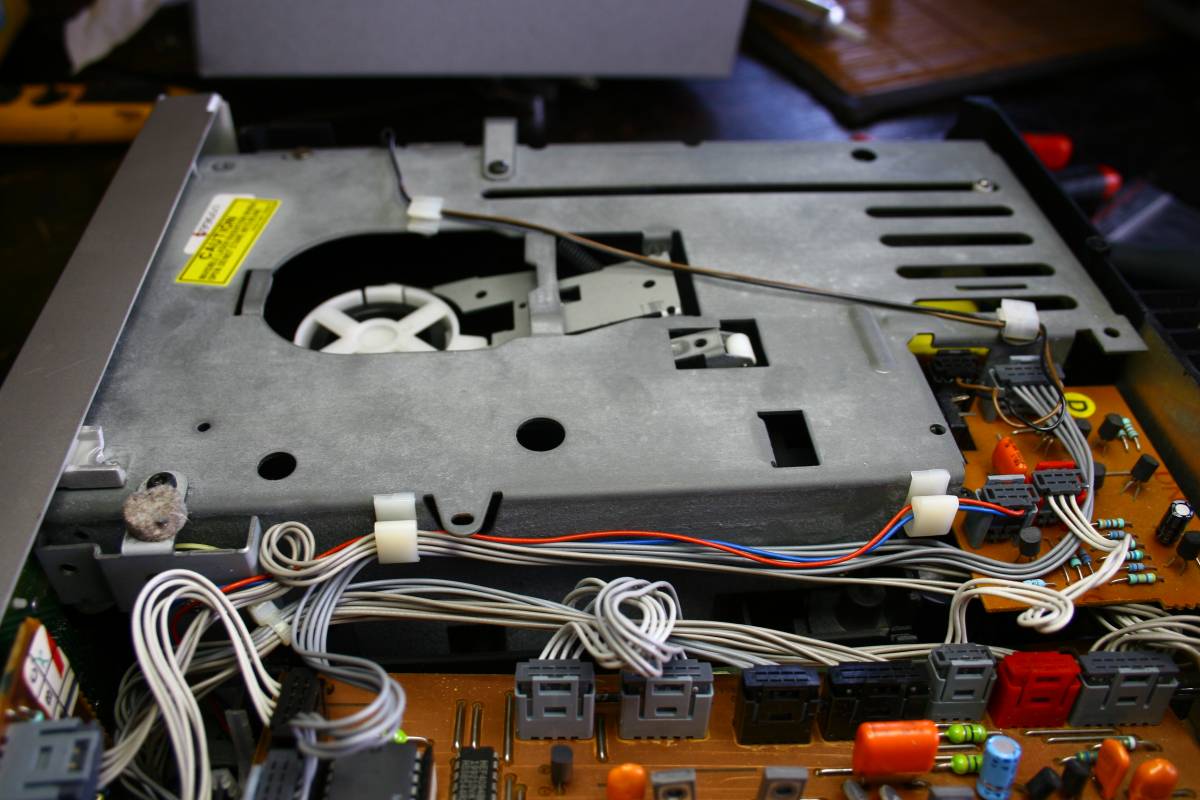
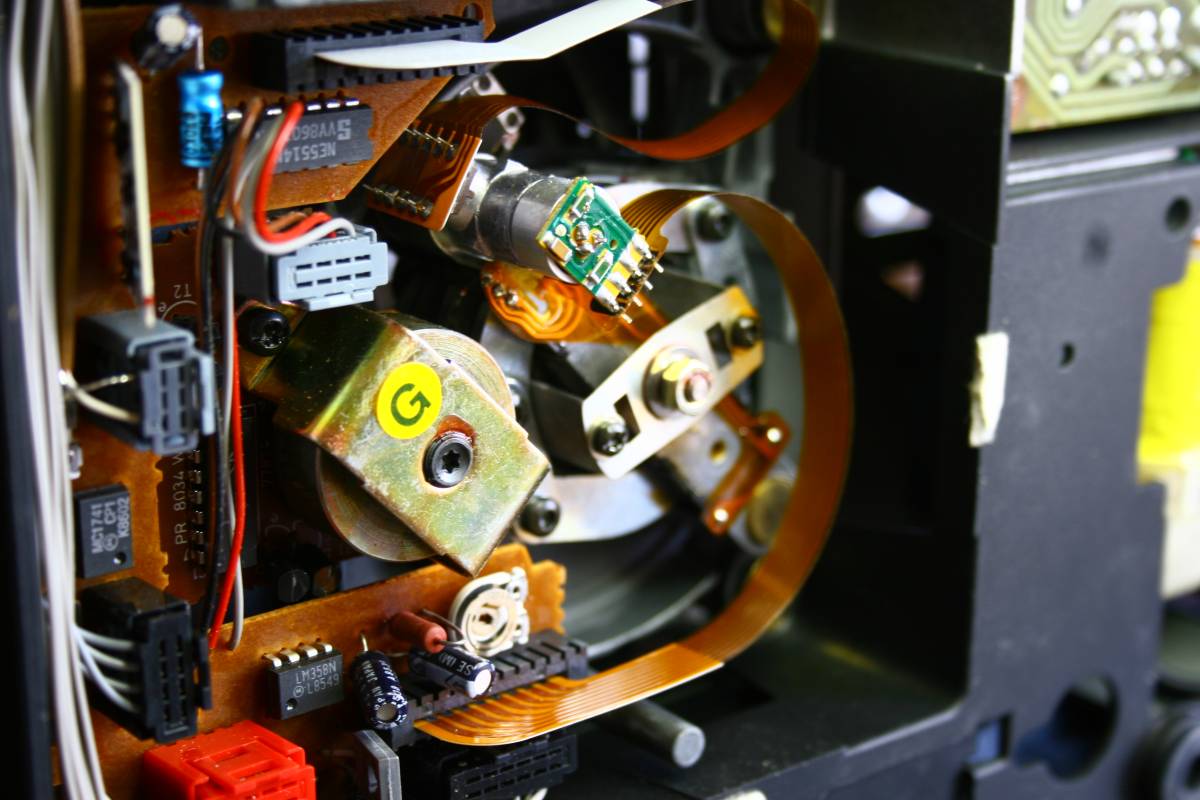
the power supply,
Despite small size the player has big power section. The regulators all sit on the gigantic heatsing. Probably the biggest heatsink on any CD player ever. Is it good or bad - I dunno. At least the regulators are temp. stable and will not burn.The down side like for all Philips older machines - and all marantzes too - is that the regulators are sooo bloody far apart from consumers (chips etc). The power runs for a quarter mile of cables and traces. I like much more the sony way - relulator half inch from consumer.
For this reason these Philips designs are very sensitive to power capacitor quality. Hence the need for oscons and blackgates.
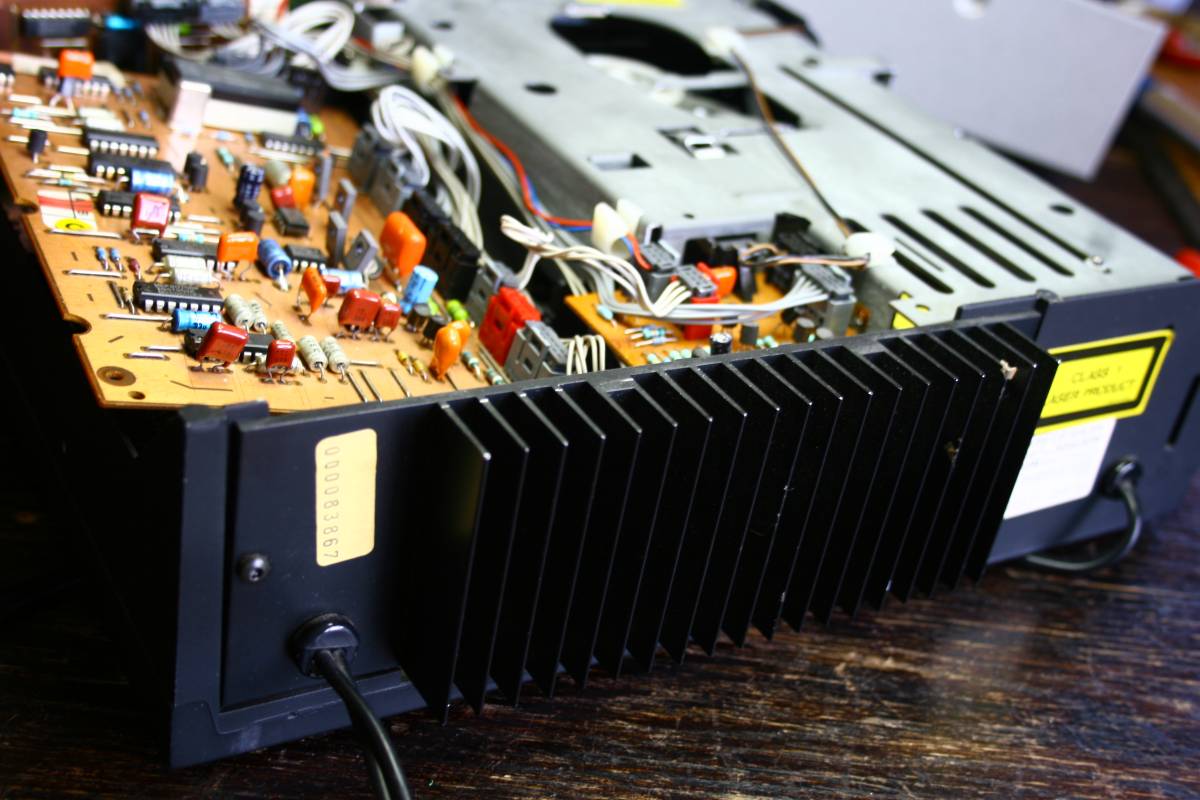
the DAC - Philips TDA1540, and the output stage.
This is a funny DAC - the oldest dac on earth. It s debut was together with CD format, circa 1980. I was just 16 years old then and we had Solidarity in Poland and a year later - the martial law. Philips came out with a DAC capable of doing 14 bit words and a disk recorded with 16 bits. We miss two precious bits - they are LOST forever. So the quality level resembles that of a very good MP# or something like that. Only few years later the Philips people released the next gen - TDA1541. (1985)Anyway, we are dealing with a grandmother of the TDA1541 - the TDA1540.
The datasheet reveals that this is almost identical chip although it is mono. It is very interesting to read about the working principle how the digits are translated into electrical signal - MUSIC. It is easier now to understand the role of the famous 14 decoupling caps.
TDA 1540 differs from the TDA1541 also because it is MONO. One needed per channel.
There are three power supplies : plus 5, minus 5 and minus 17 V. For both channels - 6 are needed. Each needs a good cap like os-con.
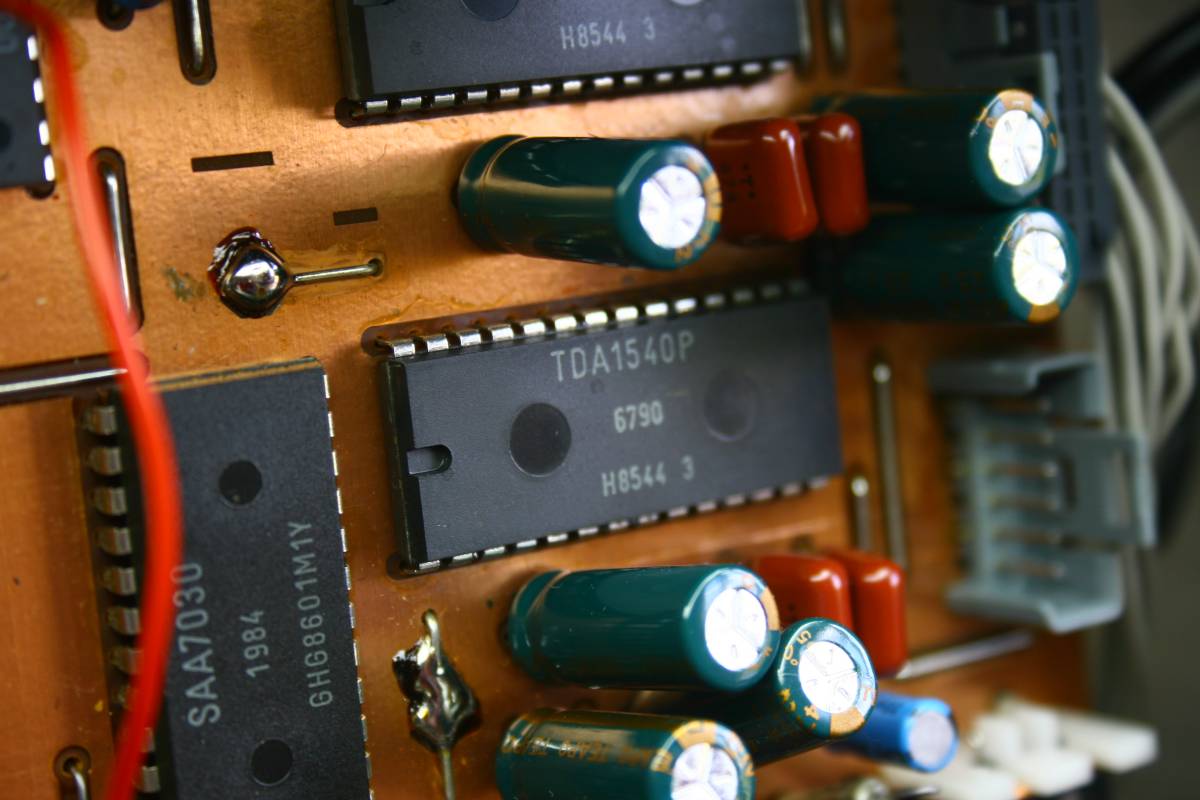
PCB tuning - capacitor games
As you see we need 6 caps for powering of TDA1540 - one for pin 4, one for pin 7 and one for pin 10. Observe polarity which is Plus5, minus5 and minus 17 respectively. I also added capacitors to decoupling , at least 3 for decoupling pins of each channel, two most significant byte pins already have bigger and better non-smd caps, so I added new caps to three next ones. All that is not counting the power to other chips on this board.
For decoupling I used additional 220nF MKP per the legs having the SMD because the critical MSB (most significant bytes) legs already have a proper MKP caps not smd.

decoupling of the DAC TDA1540
checking possibility to remove oversampling function - the NOS mod
I repeated the well tried and proven scenario - to remove the saa7030 chip and solder 4 bridges.Recommendation courtesy of Frank Willem de Haan from the Netherlands whom I thank
- remove TDA7030 completely
- in place of TDA7030 connect four wire bridges:
pin 20 - pin 3
pin 17 - pin 10
pin 18 - pin 6
pin 21 - pin 7
- de-solder only pin 16 on SAA7000 with a solder wick and make sure pin 16 "floats", it does not make any contact the circuit board. (or simply cut the trace)
- solder a 1K resistor on top of SAA7000, between pin 16 and pin 18 (to put SAA7000 in 14 bit mode, because TDA1540 needs 14 bit)
Listen to your CD104 the way the Philips engineers designed the CD player, before they were forced into messing up the sound with oversampling because of the "16 bit race".
Non destructive, if you want to revert; remove 4 wires, solder TDA7030 back in place, remove resistor and re-solder SAA7000 pin 16.
Sound improvement is VERY GOOD INDEED. I repeated this on Revox 225 and it was fantastic as well. Worked the first time.
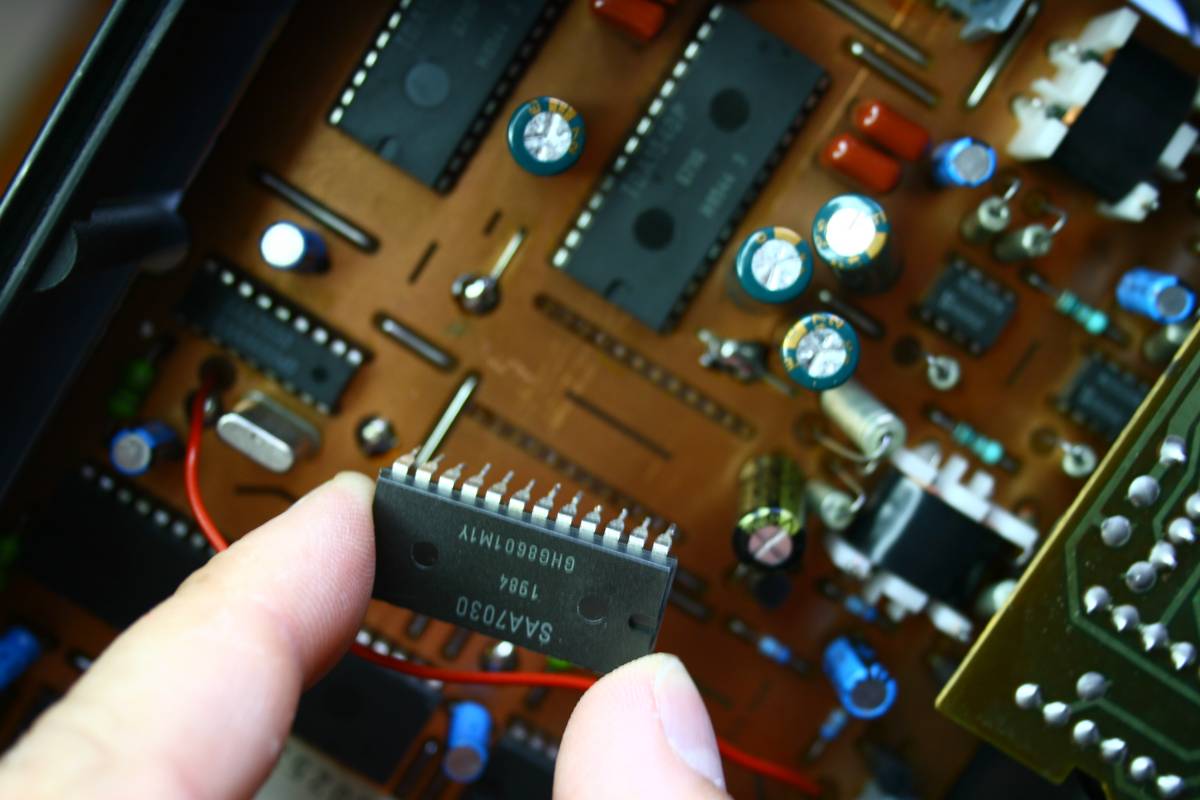
SAA7030 is on the way to the dustbin.
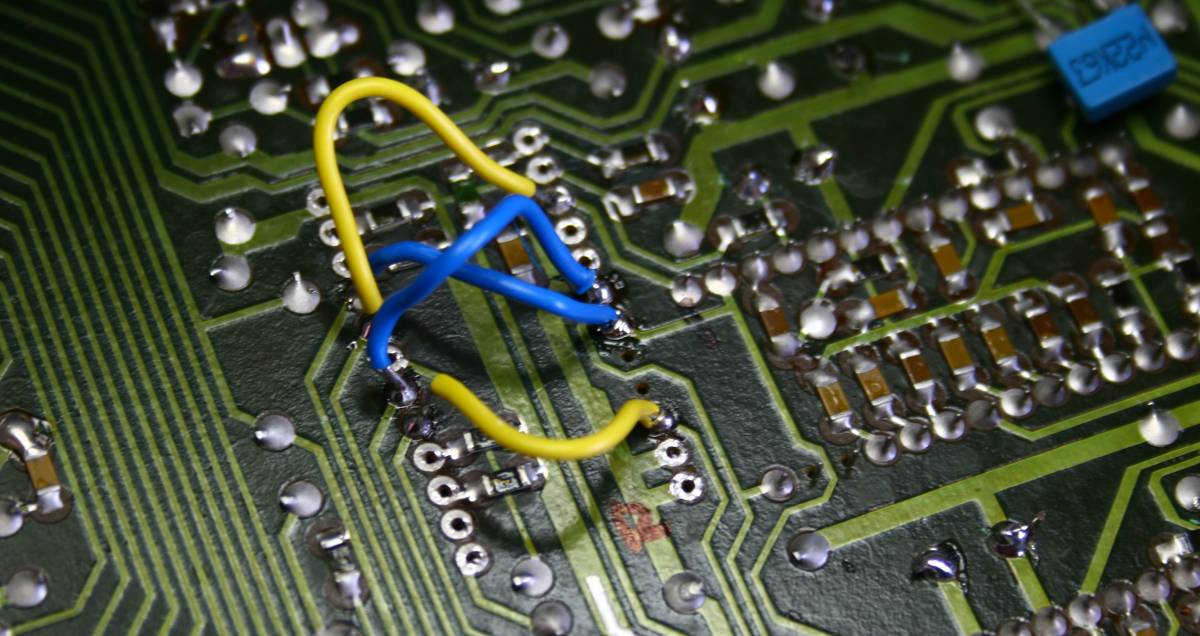
Signal bridges already installed in place of SAA7030. In fact a better way would be to trace the signal and connect the preceeding pins of the preceeding chip and bridge these points to TDA1540 directly. Just a shortcut bridge.

This is the 1K resistor bringing the Pin 16th of saa7000 to be at 5V (leg 18 potential) to read correctly 14 bit words.

General view. Lots of goodies in tight space.
adding a Lampizator output stage to remove the old OP-AMPS
Lampizator for the 14 bit old player ? Crazy ?Sounds crazy but when I heard the CD104 with just NOS and all capacitor mods - it was so good that I did not believe my ears. It is too good to be true.
You could stop here and just replace opamps with the Burr Brown OPA2604 or something equally good. But why stop - why no lampizator?
The superb mechanism and NOS mode compensate for the lost 2 bits of resolution. This player reaches very high. Almost to the level of its much younger cousin - Philips CD751 and 753.
This player well deserves being treated seriously and getting proper lampizator. The big question is WHERE ?!?!?!
(read more about the DAC chip - the big TDA1541A - HERE)
The TDA1540 is here:
evaluate the possibility to use CD104 as a transport
This will follow in September........Link to all relevant datasheet:
http://www.arky.ru/audio/sprav/datasheets/saa7000.pdf
and general datasheet bank:
300x250
사업자 정보 표시
종합인프라 | 김태훈 | 서울특별시 동대문구 신설동 난계로 26길33 2F | 사업자 등록번호 : 204-28-80712 | TEL : 02-2237-0999 | Mail : sucka80@naver.com | 통신판매신고번호 : 호 | 사이버몰의 이용약관 바로가기
'♬Ending 물건들 목록♬' 카테고리의 다른 글
| 뉴에이스 전자 LOW 임피던스 전용 MC승압트렌스 입니다.(ending) (0) | 2010.07.12 |
|---|---|
| 마란츠 베스트셀러 2330BD 블루턴형 리시버 입니다(ending) (0) | 2010.07.12 |
| 마란츠 베스트셀러 2285b 블루턴형 리시버 입니다(ending) (0) | 2010.07.12 |
